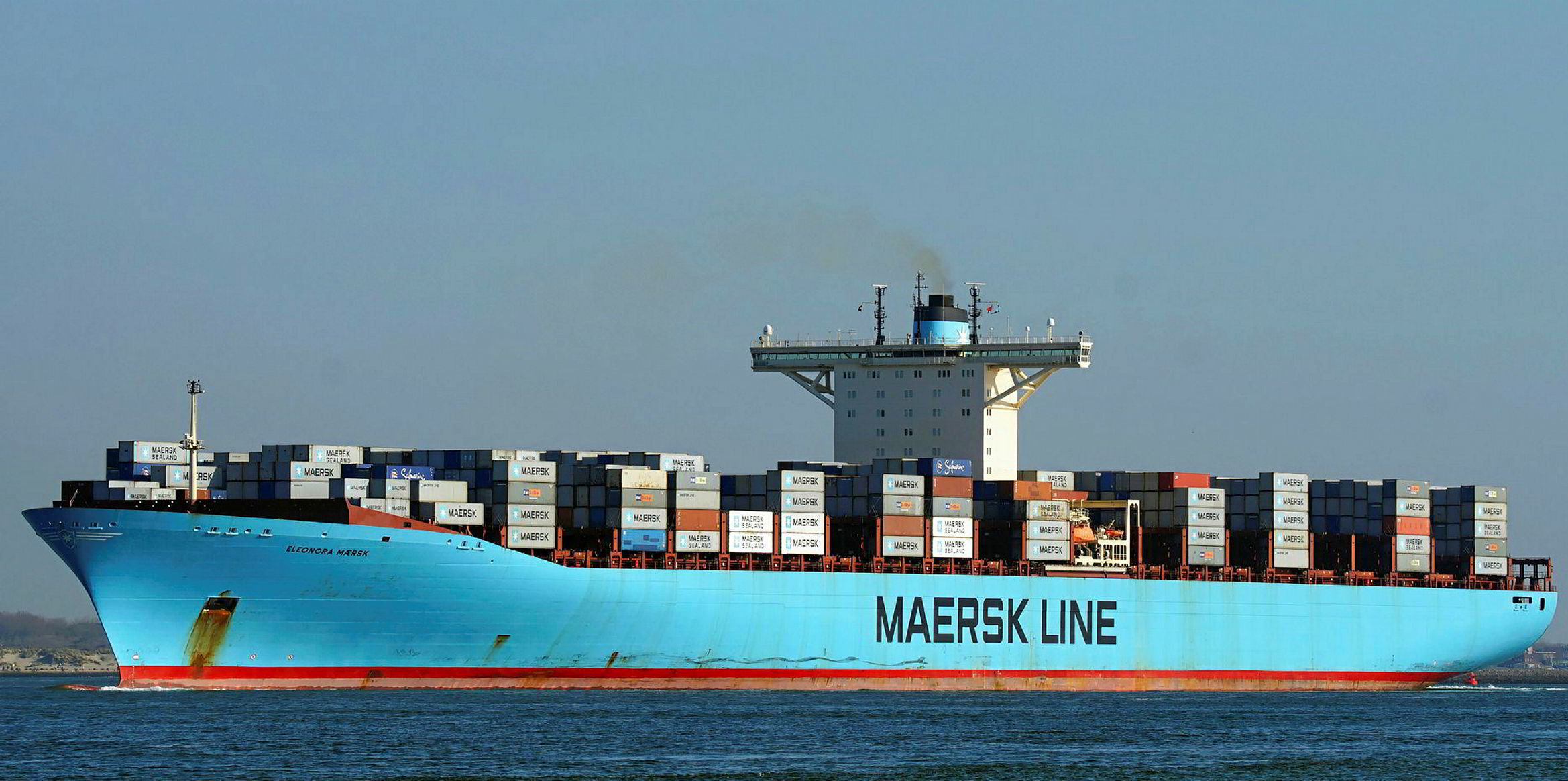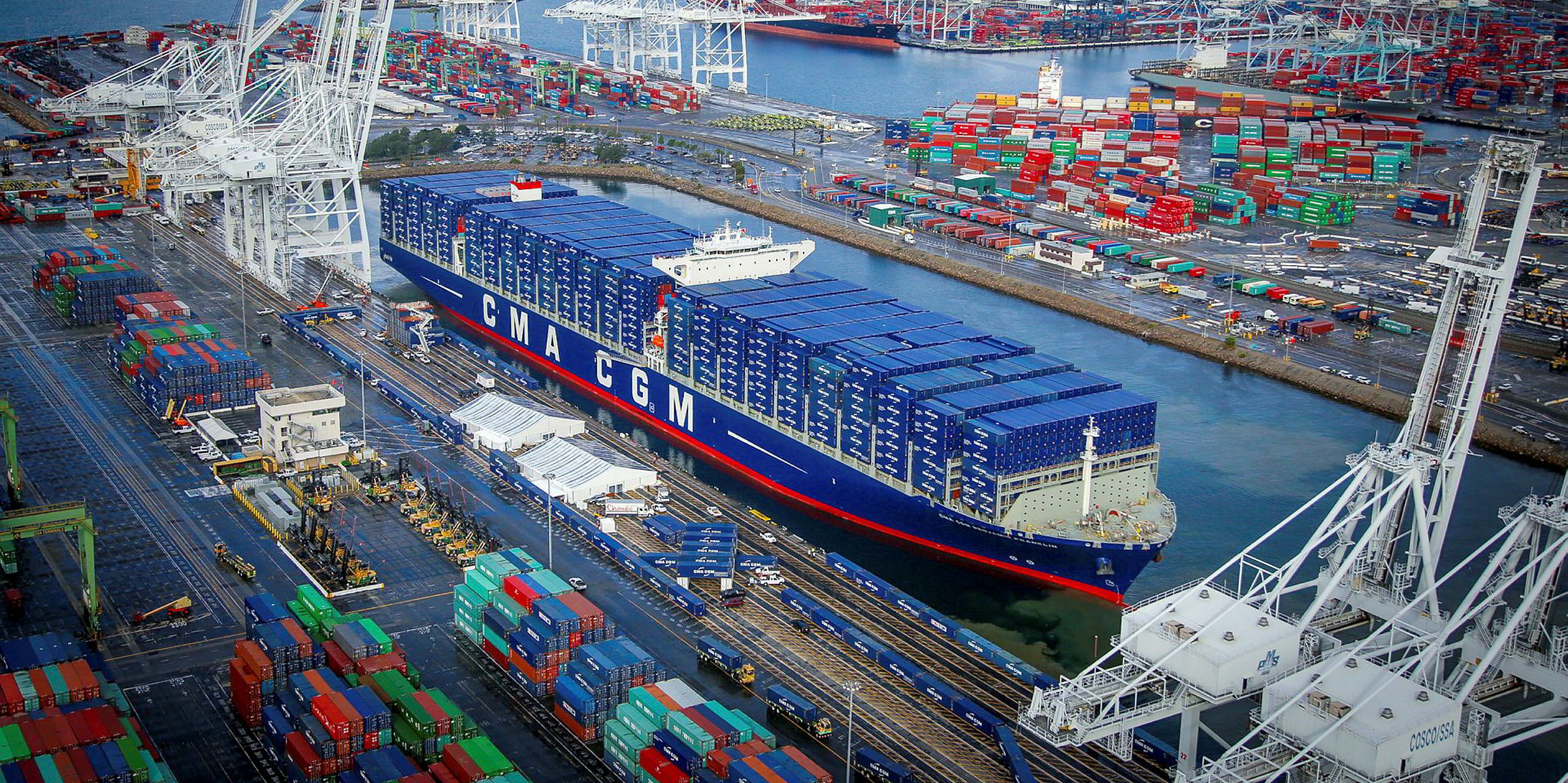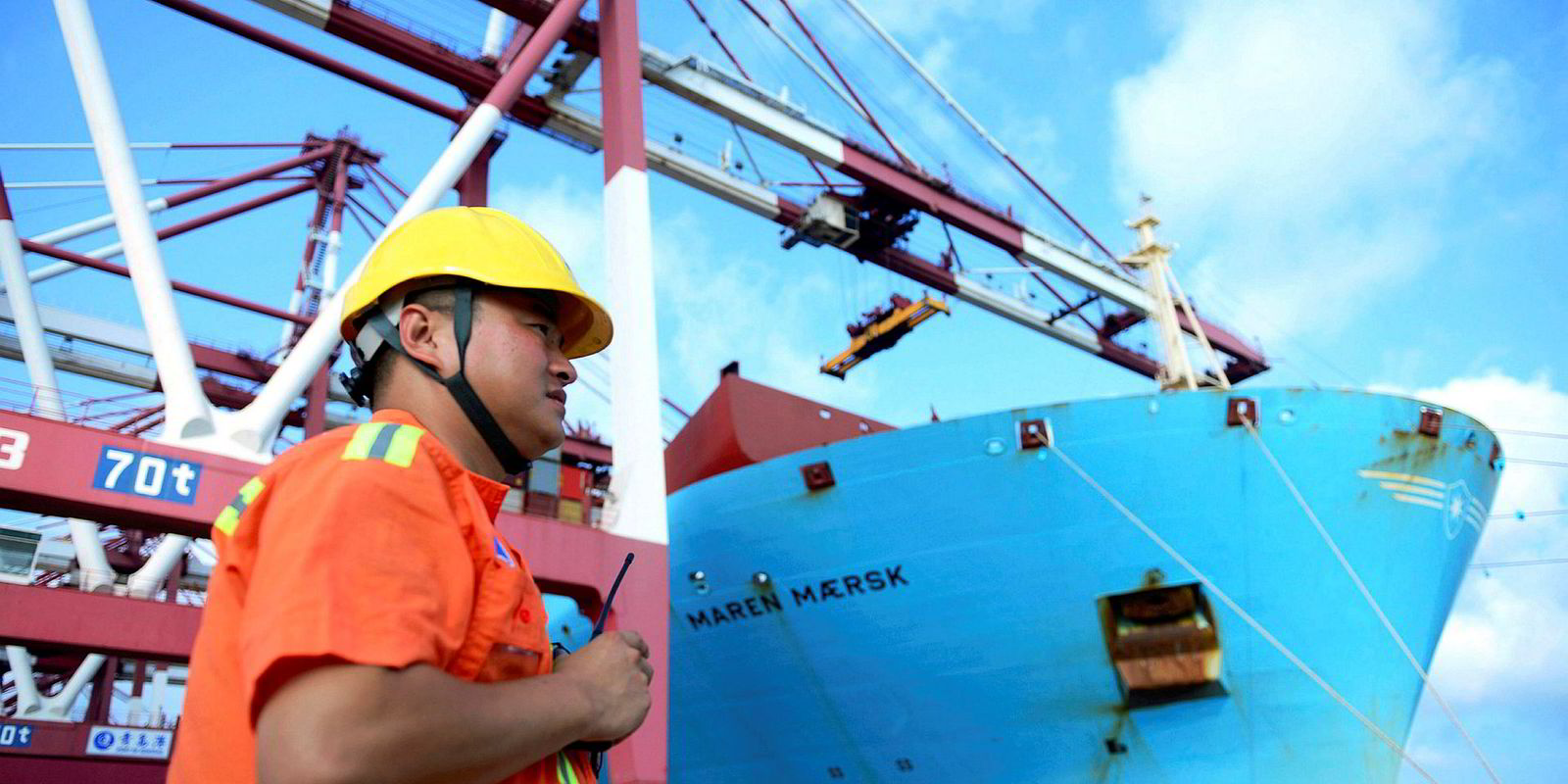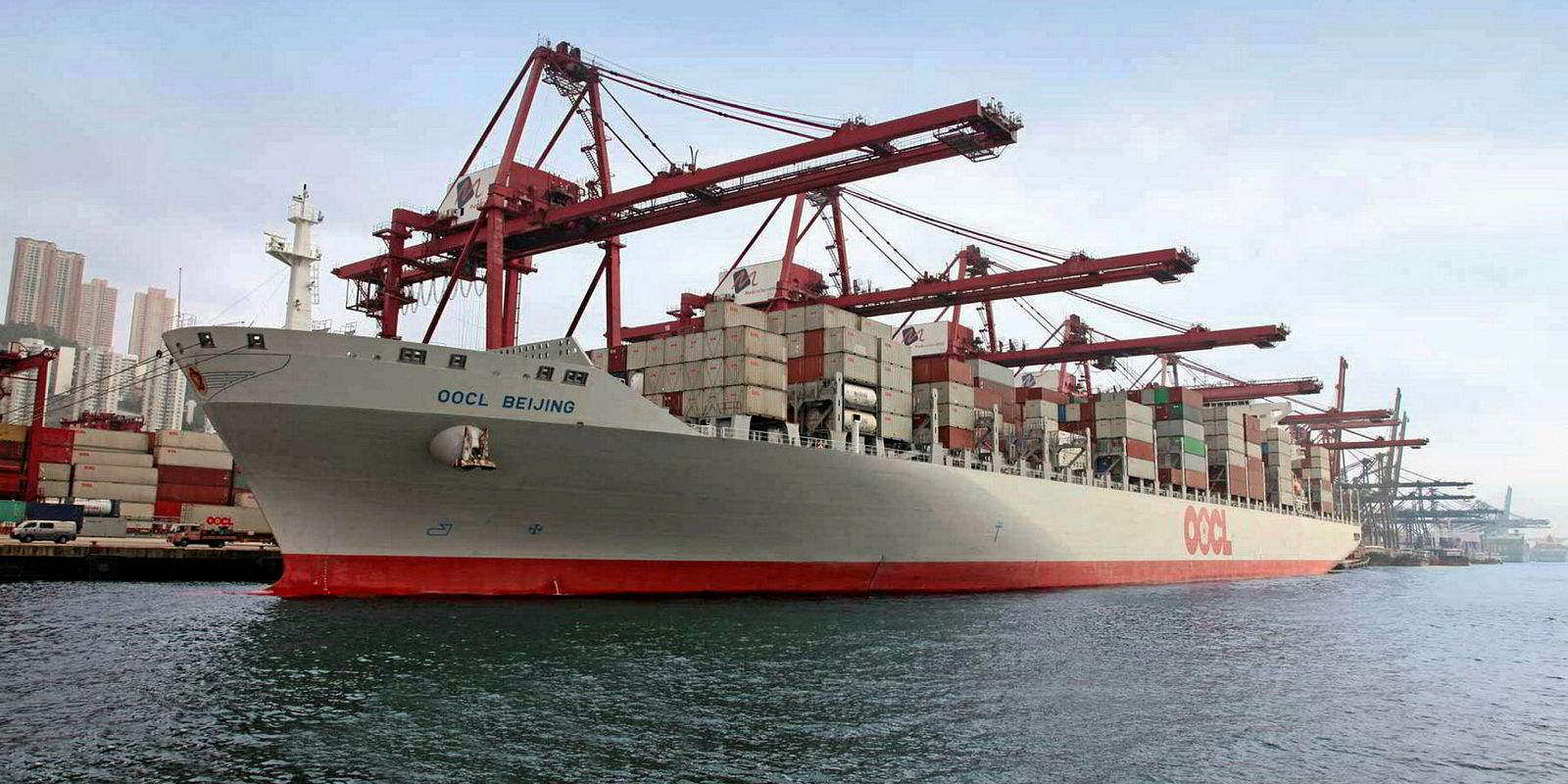Surging demand on the bustling trades between Asia and the US has resulted in lines hiking freight rates and deploying larger vessels.
The move has been made possible by a three-month rally caused by shippers rushing to beat a rise to 25% in tariffs on $200bn of US imports from China that is set to take effect on 1 January.
Eastbound transpacific sailings are reported to be heavily booked. Lines are cashing in by implementing a series of rate hikes for shipments from the start of November, which will add $100 to $200 to the cost of shipping a 40-foot (feu) container.
Rates between Asia and the US West Coast rose 2% by the end of October to $2,530 per feu, nearly double last year’s level, according to the Freightos Baltic Index.
The surge in demand is enabling Maersk Line to deploy some of the largest containerships ever used in the transpacific trades.
The 17,816-teu sisterships Eleonora Maersk (built 2007) and Eugen Maersk (built 2008) will replace the 13,102-teu Maersk Ensenada (built 2013) and 13,568-teu Maersk Essen (built 2010) for one round voyage.
They are only marginally smaller than the 17,859-teu CMA CGM Benjamin Franklin (built 2015), which was briefly deployed in the transpacific trades in 2015.
CMA CGM tested the transpacific with larger ships, but soon shifted the CMA CGM Benjamin Franklin back to the Asia-North Europe corridor.

More profitable
Some observers believe Maersk Line needs to move the Eleonora Maersk and Eugen Maersk to the more profitable transpacific route to accommodate 19,000-teu vessels that will replace them in the Asia-Europe trade.
The rise in rates marks a significant turnaround in the transpacific trade.
Rates had floundered in the first half of 2018, around 20% lower than in the corresponding period last year.
Rates have risen by more than 40% since July to levels not seen since early 2015 following the imposition of tariffs on $50bn-worth of imports by the Trump administration, according to Xeneta, which monitors freight rates.
Xeneta remains uncertain whether rates will tumble once the rush to beat the imposition of tariffs dies down, but it said the increases have begun to filter through from the spot market to contracted rates.
Rate rises for long-term contracts have been less dramatic than for spot rates, but remain substantially higher than contracts negotiated three or four months ago.
“The market is prepared to pay an increase for contract rates to remove the continued uncertainty and risk surrounding the spot market,” Xeneta said. “Time will tell whether this represents a short-term market reaction to the measure imposed by Trump.
“Regardless of the fundamentals, carriers will push home the opportunity to improve revenue streams.”





